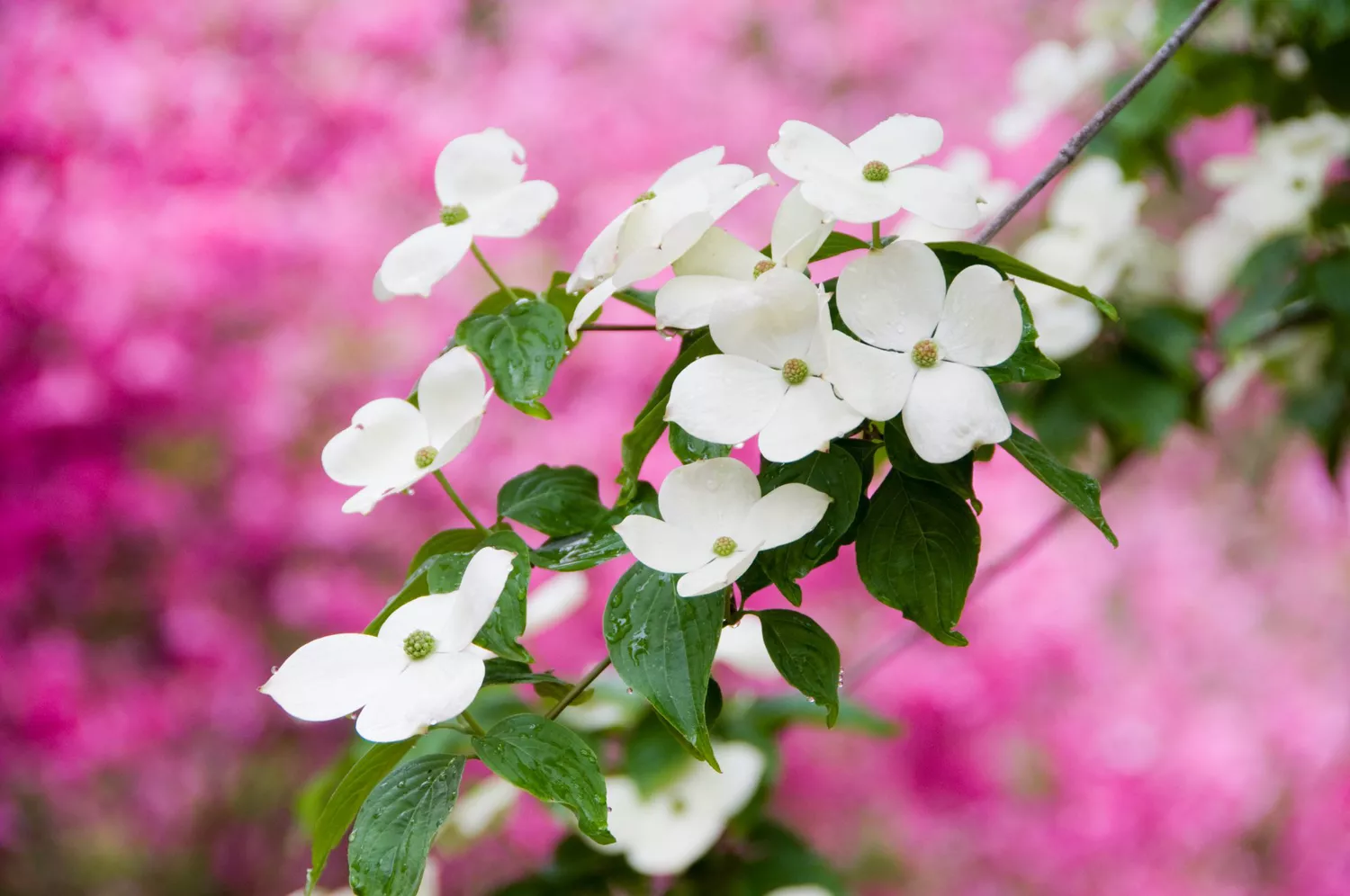
The growing season is long in USDA Zone 9, as in, it lasts almost all year thanks to mild winters. This hardiness region extends from parts of Florida, across the lower portion of Louisiana and into coastal Georgia and Southern Texas. In these locales, salty air, sandy soil, heat, and lots of sun are prevalent. You’ll want to look for choices that can stand up to drought and are resilient when it comes to both soil and weather conditions. Tropical florals like hibiscus and showy trees like the Southern magnolia will do well in Zone 9 as well as a variety of ground covers, textural shrubs, and herbs.
Shrub: Glossy Abelia (Linnaea x Grandiflora)
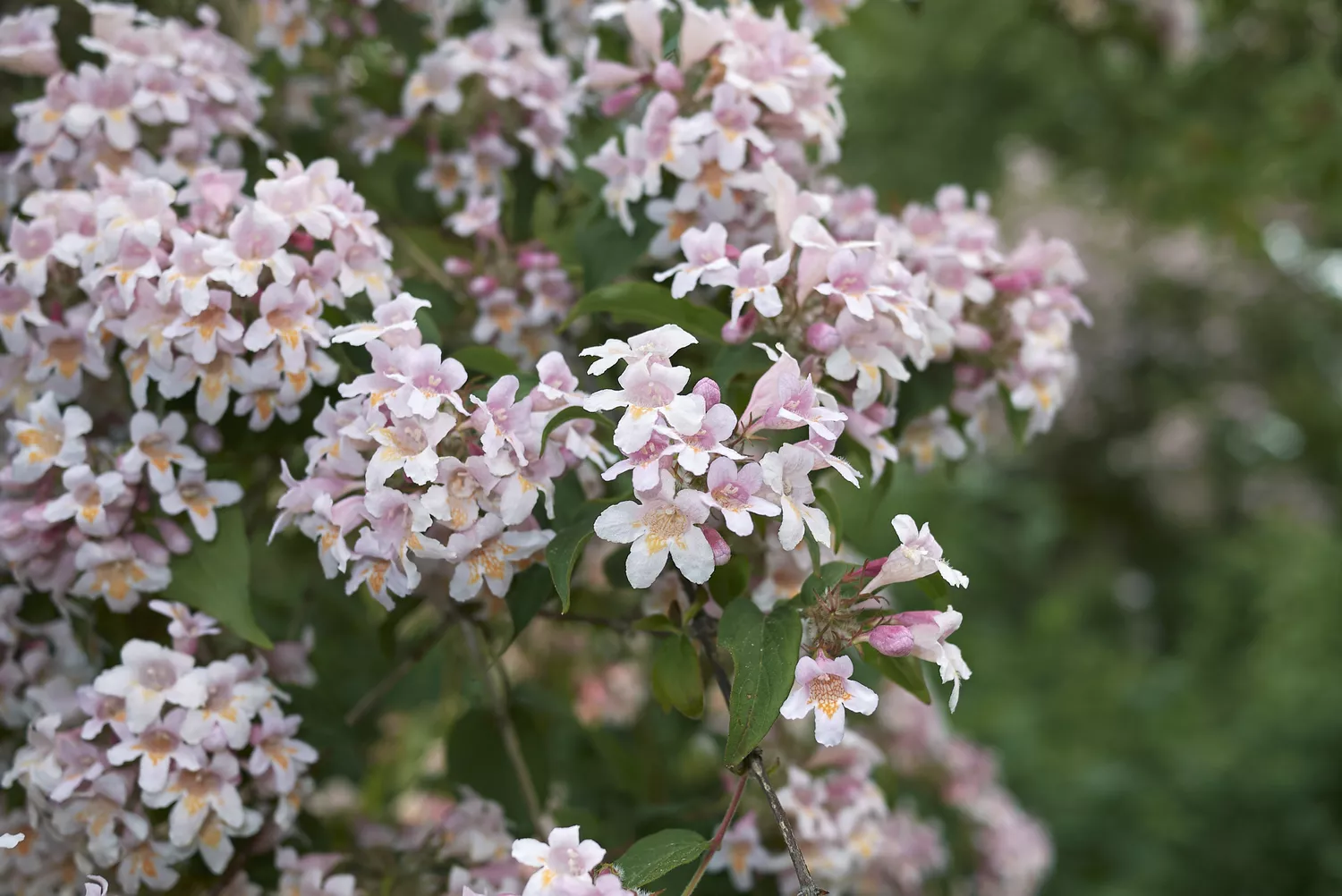
The arching branches and dark green leaves of this hybrid honeysuckle variety make for a pretty display on their own, but when the fragrant clusters of small, white or pink blooms arrive in late spring and stick around until the fall, that’s when the real show begins. The size of a glossy abelia will vary, but most will range from two to eight feet tall and three to six feet wide. While it can be grown in partial shade, plant it in full sun if you want to give your blooms the best shot. Pruning is optional and can be done in early spring or late winter.
- USDA Growing Zones: 6-9
- Bloom/Foliage Color: pink, white
- Light Requirements: full sun to partial shade
- Soil Requirements: moist, well-drained
- Water Requirements: regular watering
Perennial Flower: Hardy Begonia (Begonia Grandis)
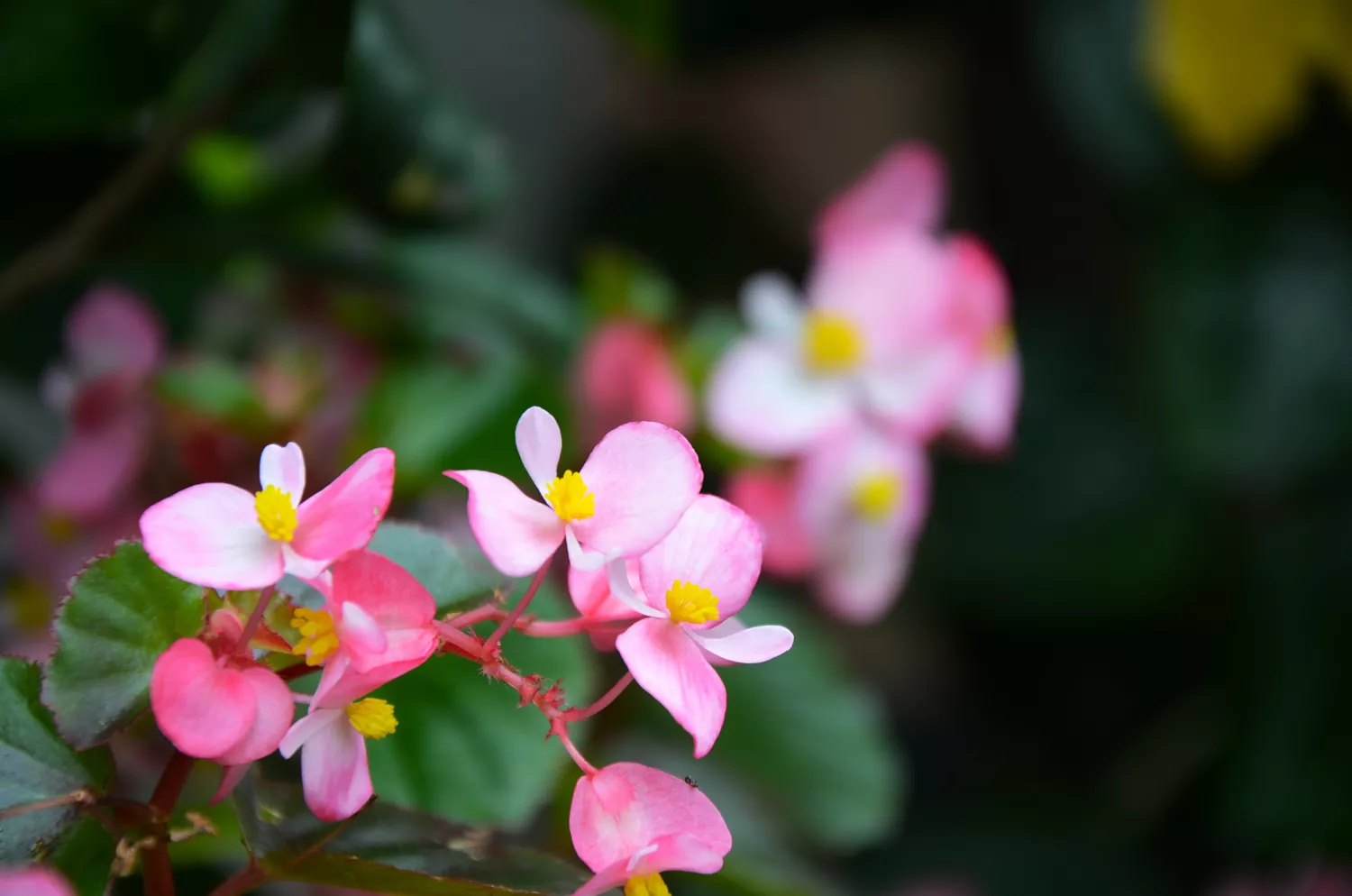
Hardy Begonia‘s pink, floppy blooms appear in clusters from July to October and attract pollinators along with them. You can extend the bloom season by deadheading spent flowers. As long as the soil doesn’t dry out (water regularly) they’ll be happy in their shaded spot. Other shade dwellers like ferns make great companion plants for the hardy begonia.
- USDA Growing Zones: 6-9
- Bloom/Foliage Color: pink
- Light Requirements: full shade to partial shade
- Soil Requirements: moist to wet, well drained
- Water Requirements: frequent watering
Chaste Tree (Vitex Negundo)
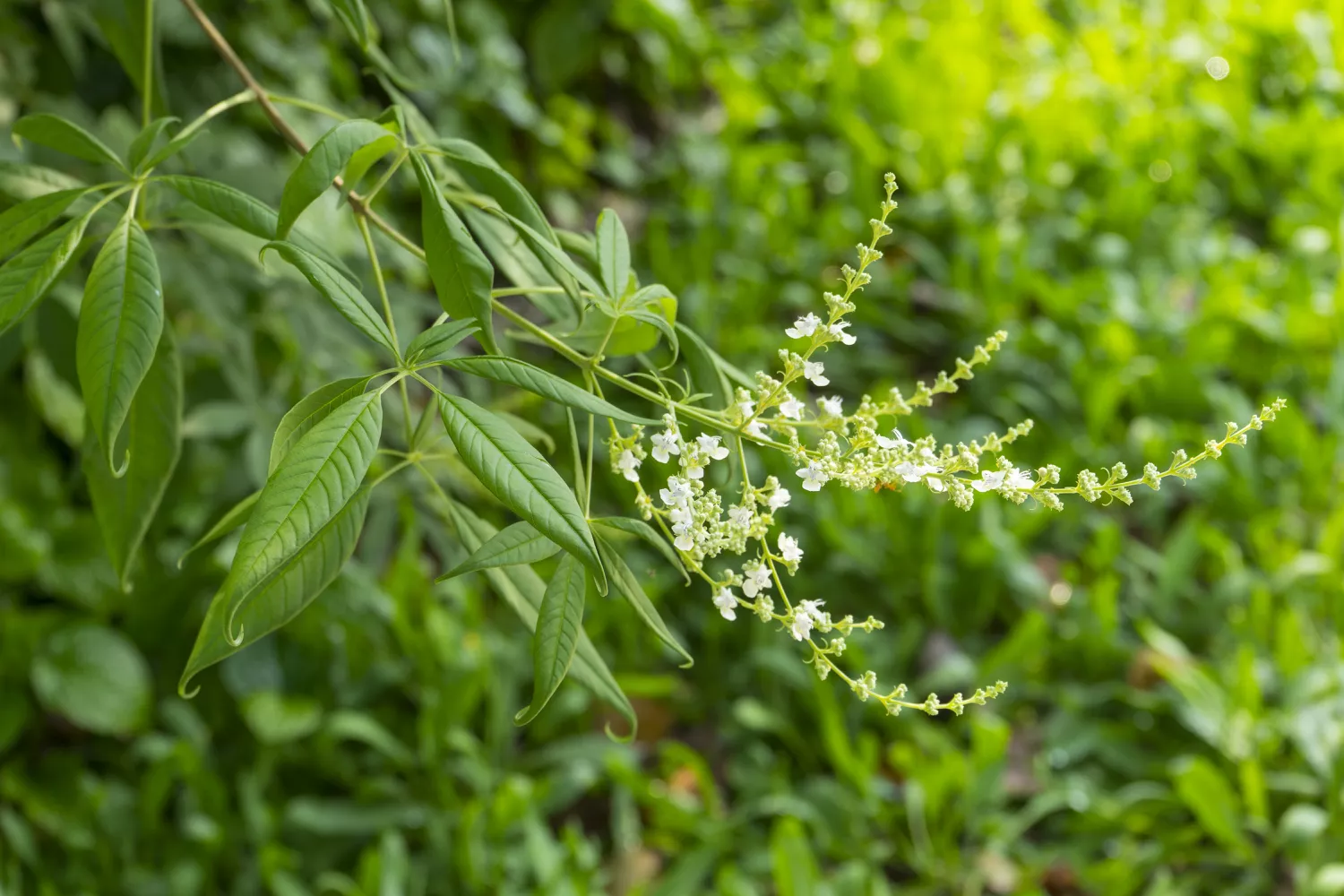
If you’re growing chaste tree in Zone 9, the warm climate might help it reach more than 15 feet in height. It can also grow in Zones 6 through 8 but will have to be grown more like a three to five foot perennial shrub in Zone 6 where it is not winter hardy. Deadheading old blooms will encourage new panicles, which are very appealing to butterflies. Chaste tree can be used as a hedge, border, or even mass planting.
- USDA Growing Zones: 6-9
- Bloom/Foliage Color: white, pink, purple, blue
- Light Requirements: full sun
- Soil Requirements: moist, well drained
- Water Requirements: water in extended drought if leaves start to fall
Flowering Tree: Crepe Myrtle (Lagerstroemia Indica)
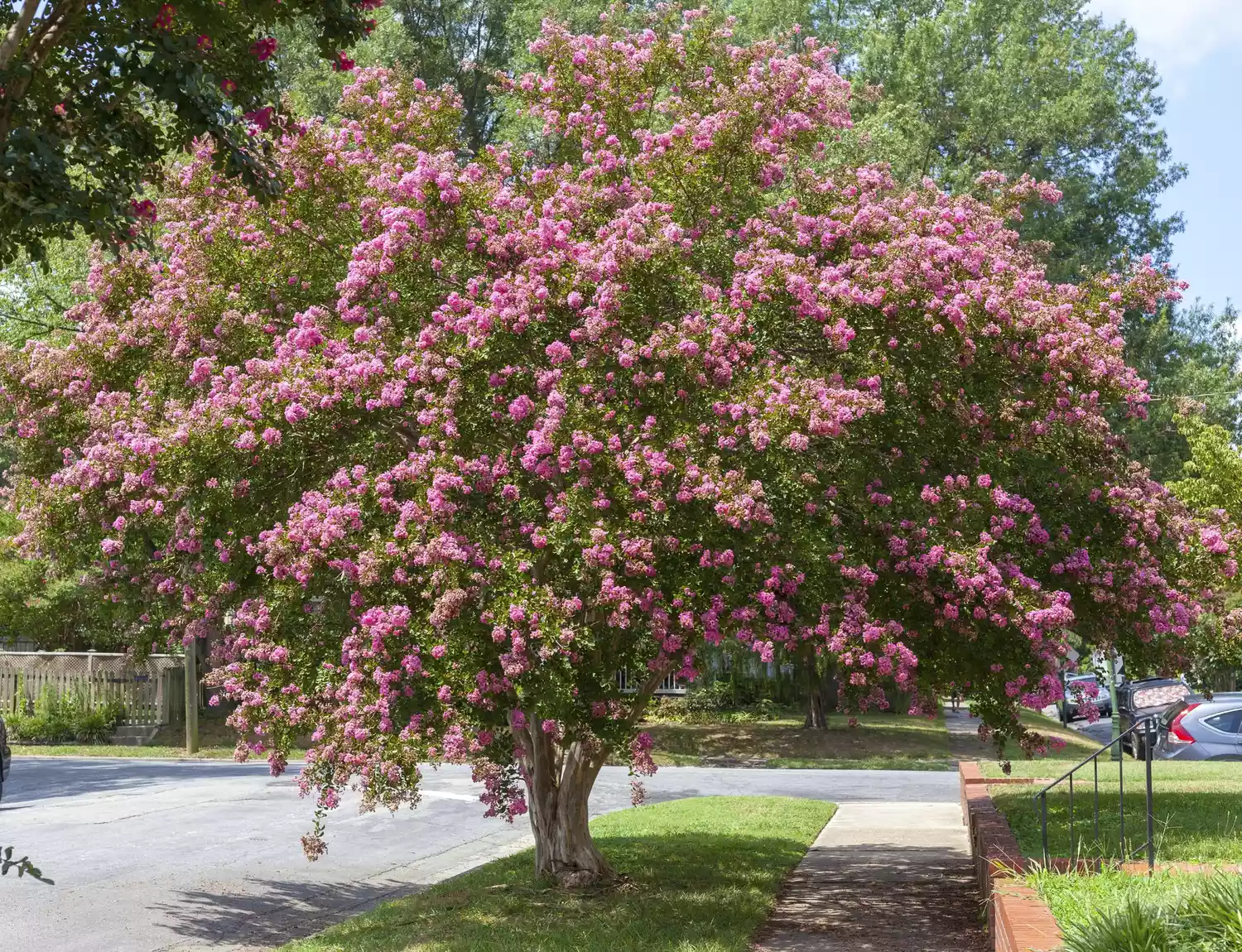
This iconic flowering tree is a favorite in Southern gardens. Known for its 6-to-18-inches-long cluster of paper-like blooms that appear from July to September, crepe myrtle flowers appear naturally in red, but many varieties have been created to expand the hue offerings to white, lavender, pink, mauve, and even purple. They’re not finnicky when it comes to their soil composition and can be grown in partial shade though they prefer full sun. To promote flowering, trim off seed pods, but make sure you don’t over prune—a term we like to call Crepe Murder.
- USDA Growing Zones: 6-9
- Bloom/Foliage Color: pink, red
- Light Requirements: full sun
- Soil Requirements: moist, well drained
- Water Requirements: only during long periods of drought
Tree: Flowering Dogwood (Cornus Florida)

Depending on your area and proximity to the coast, a flowering dogwood might be better suited for a partial shade spot rather than full sun. Consult your local nursery as they will have knowledge of both your area and the ideal conditions for a flowering dogwood. To keep the roots cool and moist, apply two to four inches of mulch during the summer. The dogwood’s flowers will attract butterflies and other pollinators to your yard.
- USDA Growing Zones: 5-9
- Bloom/Foliage Color: white, pink, yellow, green
- Light Requirements: full sun to partial shade
- Soil Requirements: moist, well drained
- Water Requirements: only during periods of extended drought once mature
Perennial Herb: Asparagus Fern (Asparagus Densiflorus)
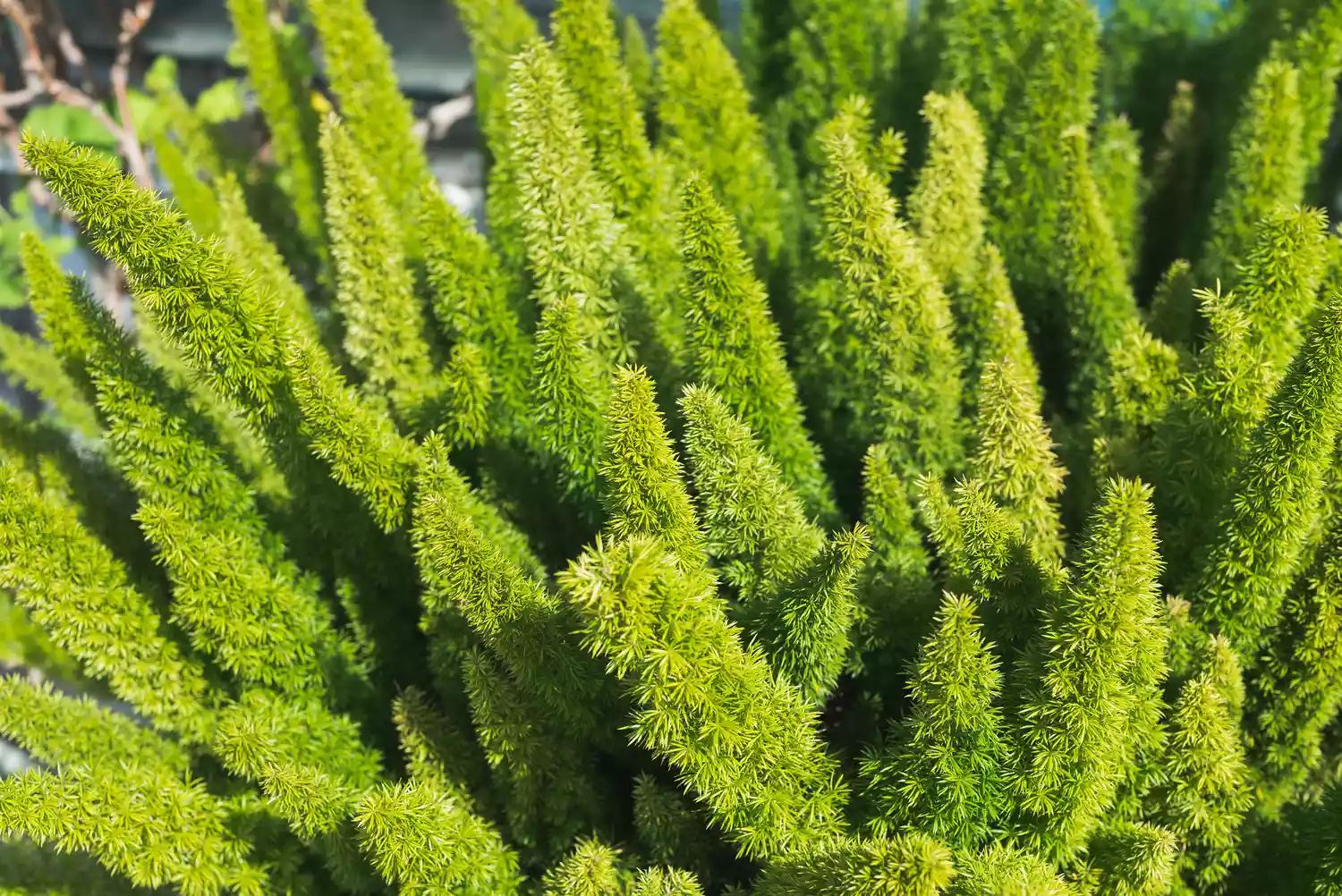
Asparagus fern is not actually a fern at all, instead, a low-maintenance perennial herb with fox-tail like branches. Although it can take a variety of light, watering, and temperature conditions, it prefers minimal direct light. If grown in full shade, the foliage will take on a lighter shade of green. Even a small dusting of frost can prove detrimental to the asparagus fern, so cover if frost is likely.
- USDA Growing Zones: 9-11
- Bloom/Foliage Color: yellow, green
- Light Requirements: dappled sunlight to full shade
- Soil Requirements: well drained
- Water Requirements: regular watering spring to fall
Shrub/Tree: Japanese Laceleaf Maple (Acer Palmatum var. Dissectum)
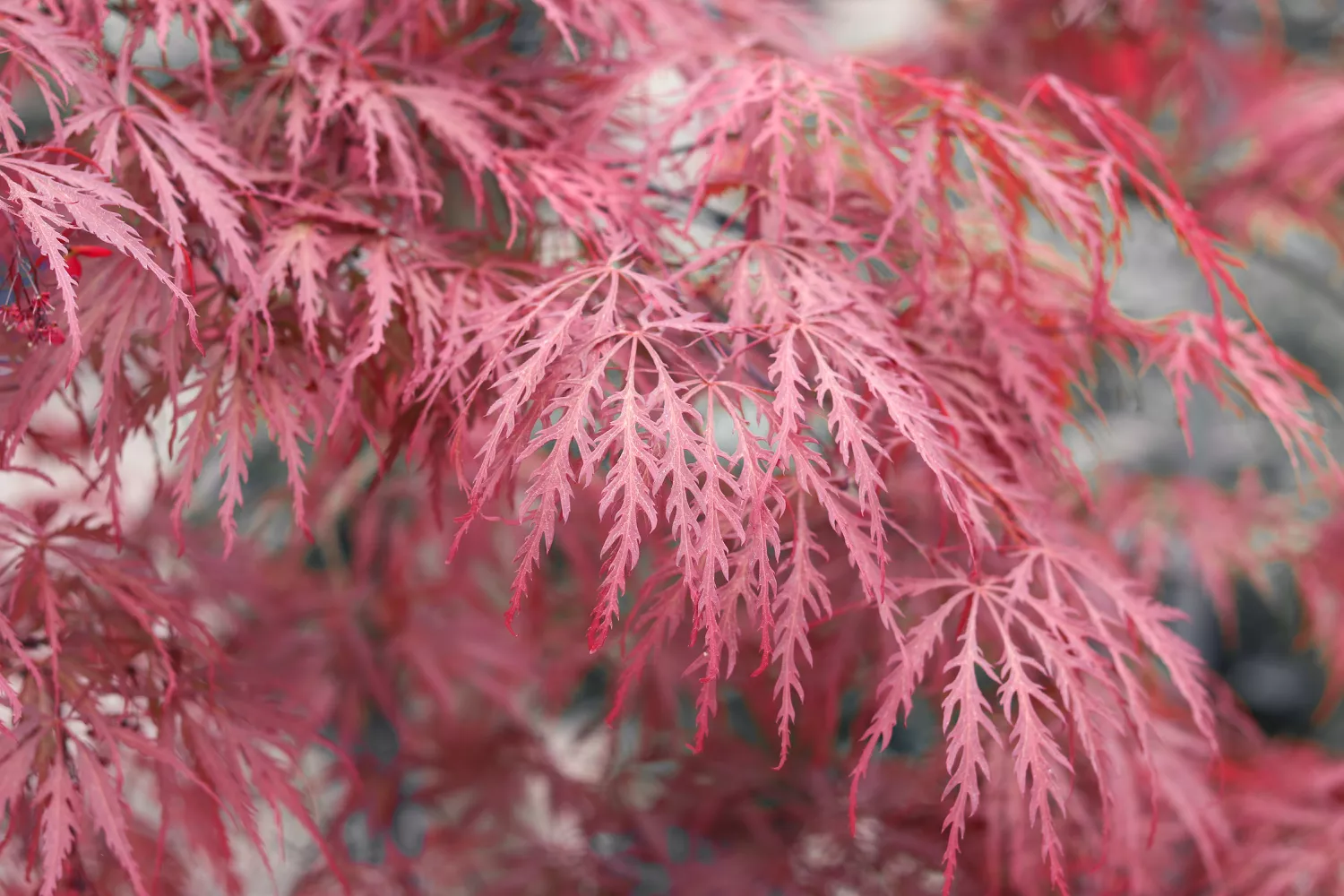
Gorgeous foliage is a hallmark of the Japanese laceleaf maple. It starts off as orange or red in the summer and gets darker as the fall arrives. It can be used as either a small tree or shrub and can handle full sun though afternoon shade is preferable. It self-seeds so watch out for spread that can wind up looking weed-like. Be mindful of overwatering as root rot can be an issue.
- USDA Growing Zones: 5-9
- Bloom/Foliage Color: yellow, purple, red
- Light Requirements: full sun to dappled sunlight
- Soil Requirements: well drained
- Water Requirements: regular watering for first two years after planting
Star Jasmine (Trachelospermum Jasminoides)
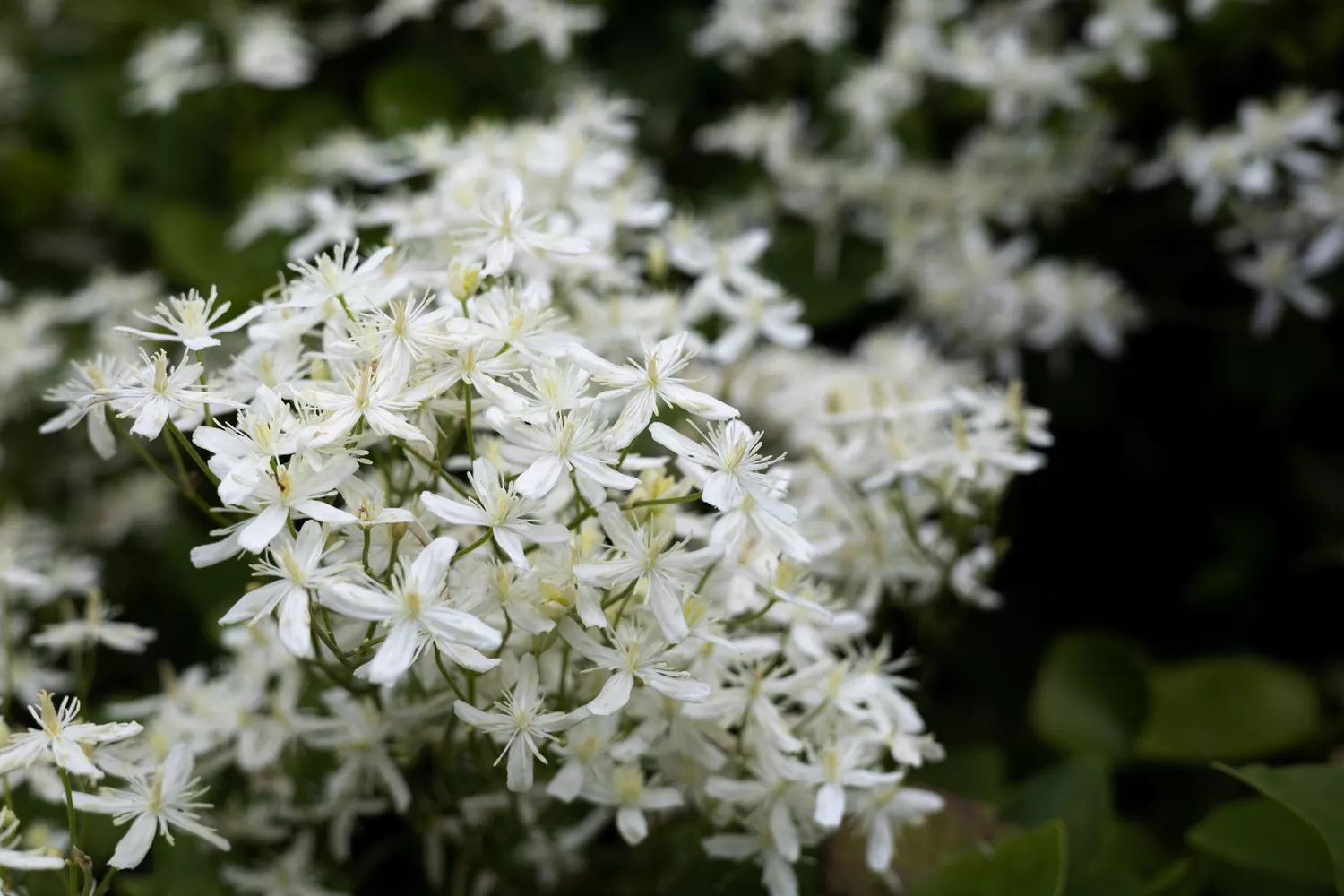
Whether grown as a shrub or climbing perennial, one thing the star jasmine is sure to deliver: a fragrant blanket of white flowers come spring. It’s relatively resilient and is tolerant of full shade if partial shade isn’t possible. It can be grown as a houseplant in colder climates. Outside it will resist deer and draw bees and other pollinators to the garden.
- USDA Growing Zones: 7-10
- Bloom/Foliage Color: white, yellow
- Light Requirements: partial shade
- Soil Requirements: moist, well drained
- Water Requirements: after established, water if leaves start to wilt
Woody Shrub: Hibiscus (Hibiscus)

For big blooms and big impact, fast, hibiscus is a hardy choice. It’s resilient and doesn’t require much care, though pruning in the spring will encourage larger flowers on new growth during the flowering season. Be sure to plant in a place where it has adequate space as it will reach 8 to 12-feet in height and 6 to 10 feet in width.
- USDA Growing Zones: 5-9
- Bloom/Foliage Color: white, pink, purple, yellow
- Light Requirements: full sun to partial shade
- Soil Requirements: well drained
- Water Requirements: water once per week
Perennial: Salvia (Salvia x Digenea)
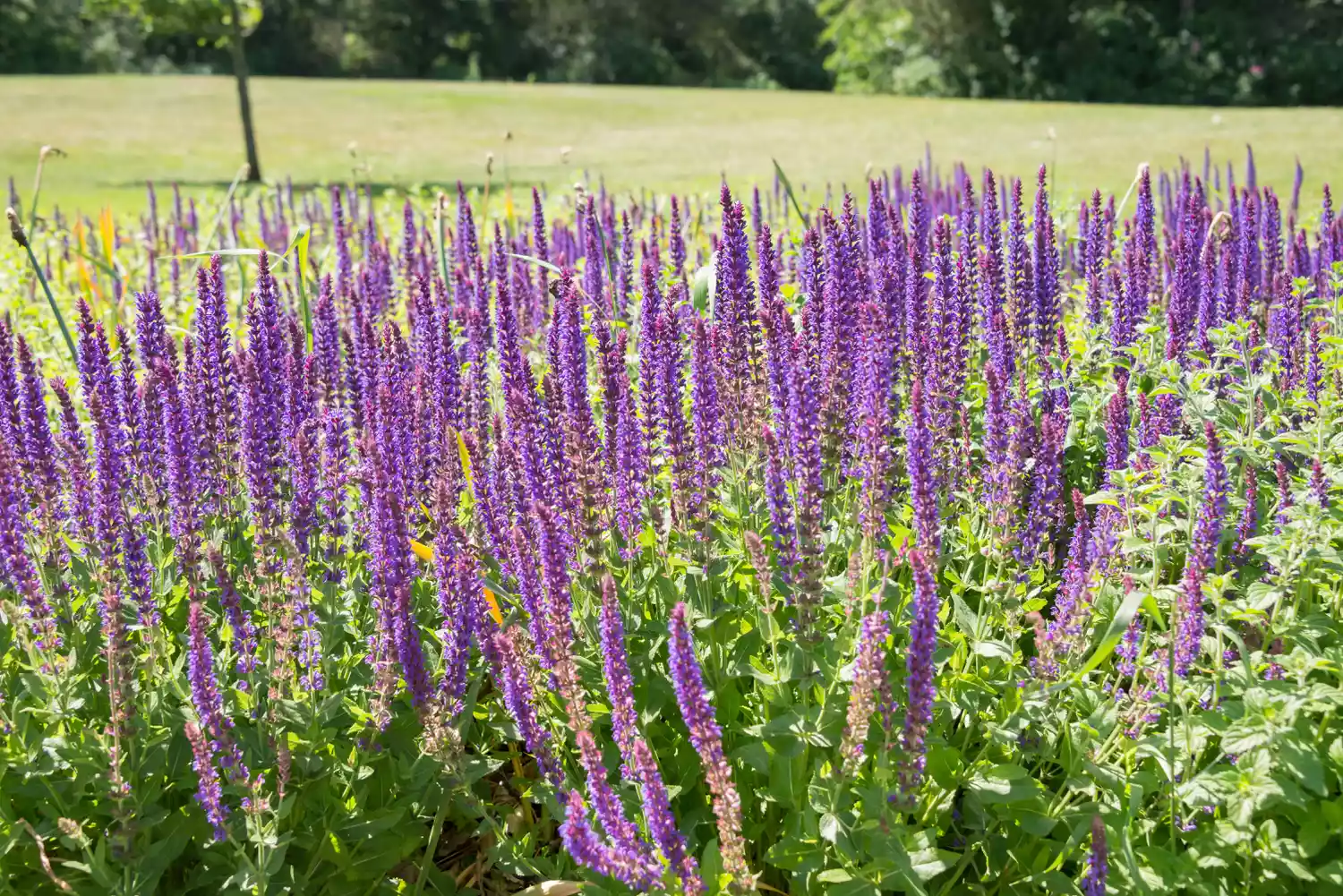
Purple to blue-colored blooms appear in spike-like formation in the summer time, attracting hummingbirds, bees, and butterflies. It should be planted in full sun and can be used in small planting or borders. Salvia is relatively easy to grow and with so many hybrids available it can be grown in a wide range of USDA growing zones. Whether you need a drought- or frost-tolerant perennial, or are looking to add a little color to your yard without fear of unwanted rabbit attention, salvia makes a worthwhile choice.
- USDA Growing Zones: 3-10
- Bloom/Foliage Color: pink, purple, blue
- Light Requirements: full sun
- Soil Requirements: moist, well drained
- Water Requirements: one inch of water every 7 to 10 days
Succulent: Sedum (Sedum)
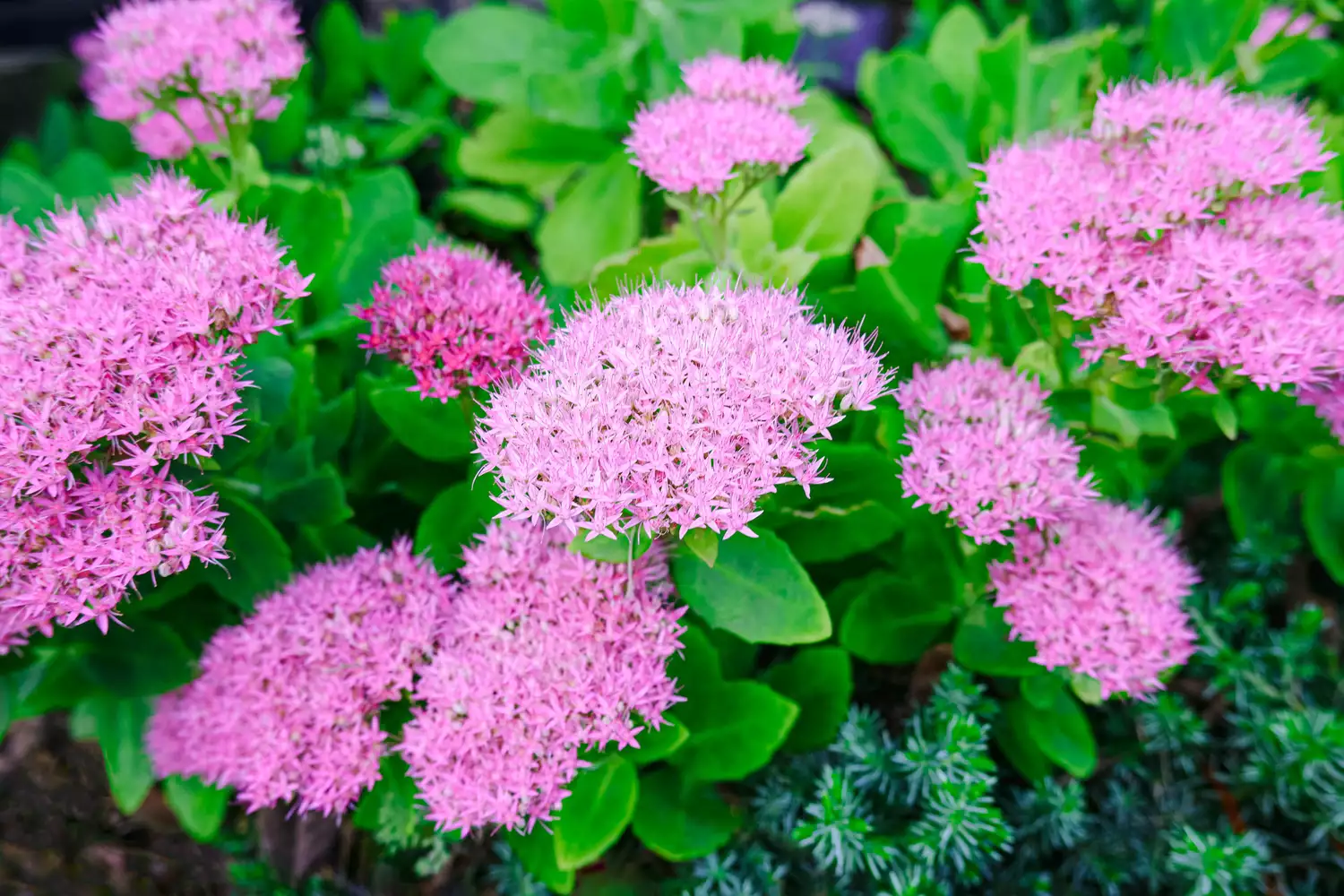
There are more than 300 species within the sedum genus. They can feature flat or round leaves and a profusion of flower clusters or, in lower-growing varieties, handsome foliage that can act as a groundcover. Because the leaves aren’t very strong or resilient, you won’t want to use sedum in places where foot traffic is expected. Sedum is a low-maintenance plant that’s resistant to drought, poor soil, and heat, but still manages to reward the gardener by attracting bees, songbirds, and butterflies to the yard.
- USDA Growing Zones: 3-9
- Bloom/Foliage Color: white, pink, purple, red, orange, yellow, green
- Light Requirements: full sun to partial shade
- Soil Requirements: well drained
- Water Requirements: water when top two inches of soil are dry
Tree: Southern Magnolia (Magnolia Grandiflora)
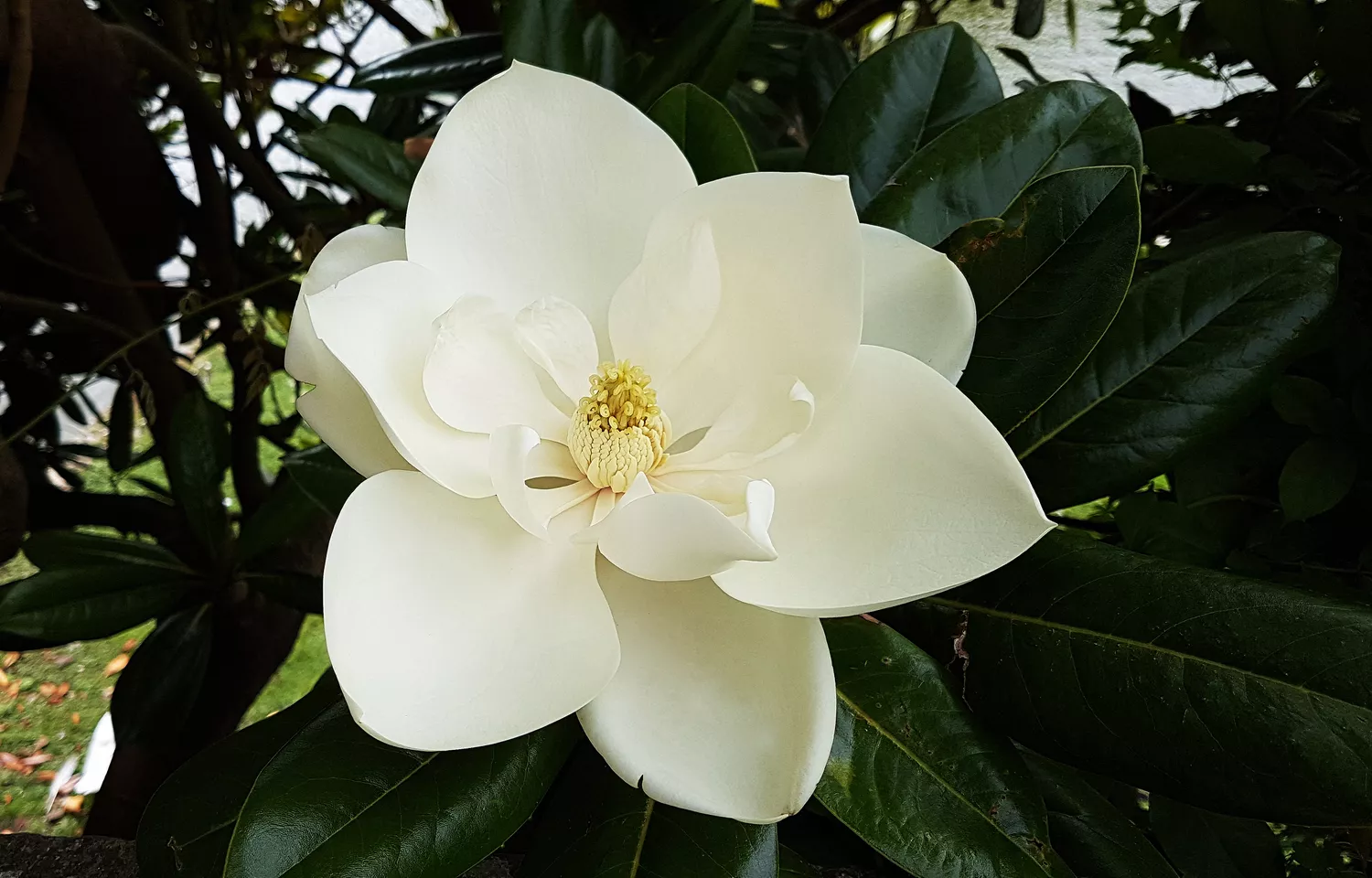
Another hallmark of the Southern garden, the Southern magnolia features large, glossy leaves and saucer-shaped cream flowers that appear in the summer. It’s not diminutive, reaching 60- to 80-feet tall and 20- to 40-feet wide. It will need plenty of room to grow and spread and nothing can be grown below its large branches and dense foliage. Mulch over the roots to prevent erosion.
- USDA Growing Zones: 6-10
- Bloom/Foliage Color: cream, white
- Light Requirements: full sun to partial shade
- Soil Requirements: moist, well-drained
- Water Requirements: water during extreme drought





